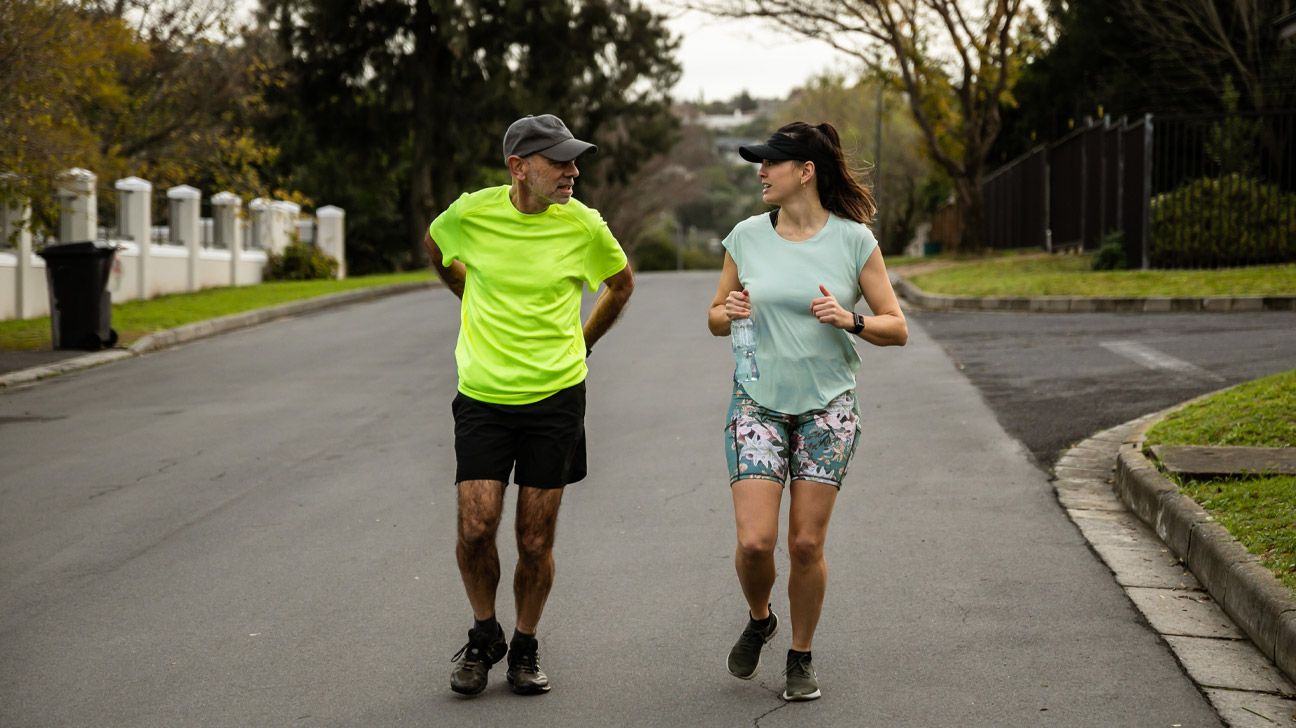Walking might be one of the best ways to help back pain. It can strengthen the muscles in your back, reducing the pain of a flare-up and preventing future episodes.

When your back hurts, the last thing you may want to do is move around. However, bodies usually need movement, and walking can be especially helpful for people with back pain.
Walking may strengthen your muscles, improve your posture, and stabilize your back. These benefits from walking can be crucial to managing back pain because they might help reduce flare-ups and prevent future episodes.
Yes, walking may be one of the best exercises for back pain. It’s often especially effective at relieving and preventing lower back pain. In fact, regular exercise, including walking, can reduce lower back pain flare-ups by almost
Walking tends to be most effective at helping nonspecific back pain, which is when the pain doesn’t have a specific disease or injury to explain it. A
However, if you have an acute back injury or another spinal condition, check in with your doctor before starting a new walking routine.
Walking can help with back pain by strengthening the muscles supporting your spine. When you walk, your core, back, and leg muscles engage and contract to stabilize your spine.
Limited physical activity can weaken spinal muscles, which can cause spine misalignment, leading to pain and fatigue.
Specifically, walking can help your back pain because it can:
- strengthen muscles and endurance
- increase circulation
- raise muscle fiber activation
- improve spinal movement
- reduce muscle tension
- boost joint mobilization
Proper form and posture are vital for reducing back pain and benefiting from walking.
Some tips for appropriate walking form:
- Hold your head up: Walk tall, with your chin parallel to the ground.
- Straighten your spine: Lengthen your back, and try not to slouch or lean forward.
- Keep your shoulders down and back: Shoulder shrugs can help relax your shoulders.
- Swing your arms: Move them from your shoulders, not your elbows.
- Be aware of your feet: Let your heel land first and then transition to rolling off your toes.
- Wear appropriate footwear: Be sure you have proper foot support and cushion.
- Avoid overstriding: This can stress your lower leg joints.
Walking is generally a low risk activity and can often help reduce nonspecific back pain. However, approaches other than walking may be necessary for the following conditions.
Exercise caution if you have:
- An active back injury: A recent strain, sprain, or fracture may need healing time before you can safely exercise.
- Spinal stenosis: This condition can lead to nerve compression and pain. Walking on irregular surfaces or inclines may increase your pain.
- Herniated disk: A herniated disk can also result in nerve compression and pain that may worsen when walking.
- Sciatica: Sciatica pain usually affects your nerves on one side of your lower body. Walking is often helpful for sciatica, but in some cases, walking may worsen the pain.
Should I walk if my back hurts?
Walking can usually improve your back pain unless you have a recent back injury. However, resting for too long can weaken your back muscles and increase your chances of more back pain. Gentle activities and walking can help you relieve back pain even if your back feels sore.
Does walking strengthen your back?
Walking engages and strengthens the muscles that support your back, leading to improved stability and reduced back pain. A regular walking routine may help manage back pain.
Does walking decompress your spine?
Walking can be a great tool for reducing compressed spine symptoms. However, walking alone isn’t usually enough to treat it. Other treatments, such as physical therapy, may be more effective. Surgery may be necessary in more severe cases.
Walking can be one of the easiest and most effective ways to help back pain, with a few exceptions. Gentle movements such as walking can also benefit nonspecific back pain.
Walking strengthens the muscles around your spine, adding stability and helping minimize back pain. Doing it more often can help you manage your back pain, reduce flare-ups, and prevent future episodes.
